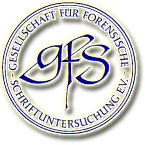



Handling of Non-Originals in Forensic Handwriting Examination
Guideline 4.1
The subject matter of this guideline are non-original handwriting manuscripts of any kind, which were originally produced on a suitable typeface for handwriting by using a suitable writing medium, but are only available as reproduction for a forensic handwriting examination.
As reproductions occur in different imaging qualities, the available analyzability in the material-critical assessment is to be considered initially. Furthermore, the absence of the original leads to two significant examination deficits, which must be considered in the assessment of findings and in the result.
On the one hand, the relevant physical-technical examinations as well as the investigation and evaluation possibility of several significant graphic feature classes are limited or not available at all. On the other hand, non-originals contain only visual representations and are not equivalent to originals.
Therefore the questionable issue remains, whether a congruent original document exists or has ever existed. Even if no corresponding manipulation features are recognizable, the possibility that the investigated reproduction represents an assembly can not be excluded.
These limitations in the investigation of non-originals and their effects on the result need to be discussed and reflected in the examination results. Consequently, the conclusion can only refer to the examined handwriting, detached from the integrity of the document or context.
The limitation of the result to the actual examined section is also required for originals, but for non-originals the basis of assessment and the question of generalizability needs to be much more clearly addressed in order to meet the responsibility.












